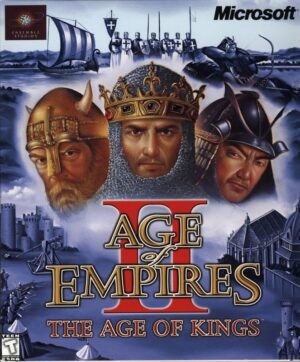Retro Replay Review
Gameplay
Kuon blends survival-horror staples with action and puzzle-solving in a way that feels both familiar and refreshingly unique. You guide three distinct protagonists—Utsuki, Sakuya, and Doman—through branching scenarios, each with their own abilities and limitations. Exploration is methodical: you’ll navigate dimly lit corridors, haunted chambers, and sprawling courtyards, all while managing scarce resources like healing items, weapon durability, and spell components.
(HEY YOU!! We hope you enjoy! We try not to run ads. So basically, this is a very expensive hobby running this site. Please consider joining us for updates, forums, and more. Network w/ us to make some cash or friends while retro gaming, and you can win some free retro games for posting. Okay, carry on 👍)
Combat in Kuon leans heavily on strategy. Physical weapons such as swords and spears can be used to fend off ghostly foes, but ammunition and weapon durability are scarce. To supplement your arsenal, characters learn onmyōdō spells ranging from purifying fire to protective barriers. Summoning familiars—wolves, spiders, or other creatures—adds another layer of depth, as these allies can distract or damage enemies, buying you precious seconds to heal or plan your next move.
Puzzles are generously sprinkled throughout the mansion and its surrounding grounds, often requiring you to combine items or decipher ancient inscriptions in classical Japanese. While some challenges feel obtuse by modern standards, they reinforce the game’s oppressive atmosphere, forcing you to slow down and absorb the lore. Inventory management becomes a puzzle in itself, and part of the thrill is deciding whether you’ll risk backtracking for a missed key or push forward into unknown horrors.
Graphics
Kuon’s visual presentation is a standout feature. Utilizing pre-rendered backgrounds, the game recreates the Heian period’s architectural elegance and supernatural decay with meticulous detail. Dimly lit hallways, rusted gates, and flickering lanterns all contribute to a sense of unease, making every shadow a potential hiding spot for malevolent spirits.
Character models blend neatly into each environment, though they sometimes appear blocky by today’s standards. Animations for enemy encounters—especially the more grotesque demons—are surprisingly fluid, with jerky, animalistic movements that evoke genuine revulsion. Cutscenes employ higher-detail models and dramatic camera angles to heighten suspense, framing each revelation or jump scare in cinematic fashion.
Lighting and color palettes play an essential role in mood-setting. Warm candlelight casts long shadows that dance ominously across tatami mats, while cold blue glows signal forbidden rituals or spectral visions. Despite its age, Kuon’s visual style retains a haunting beauty, and modern displays can enhance the original textures for a crisp, immersive experience.
Story
Set in 12th-century Japan, Kuon weaves a multi-threaded narrative around Doman, an esteemed exorcist summoned to a nobleman’s cursed estate. When Doman vanishes without a trace, his daughter Utsuki ventures into the manor’s depths, determined to find her father. Meanwhile, her sister’s innocent curiosity leads her to become possessed, transforming her into a vessel for malevolent forces.
Sakuya, a young disciple eager to prove herself, follows Doman into the demonic realm with unwavering devotion. Her scenario unfolds alongside Utsuki’s, each chapter peeling back layers of the haunting mystery that binds the three characters together. Once you complete both their paths, you unlock Doman’s perspective, witnessing the source of the curse and the tragic events that doomed the family.
The story draws heavily on Japanese folklore and onmyōdō traditions, infusing every corridor and spirit encounter with cultural authenticity. While the pacing can feel deliberate—sometimes lingering on atmospheric sequences over plot advancement—it rewards patient players with chilling revelations and poignant character moments. Voice acting (in Japanese) and subtitled dialogue further ground you in the era.
Overall Experience
Kuon is a niche gem for fans of classic survival horror and Japanese folklore. Its measured pacing and emphasis on atmosphere may frustrate those seeking nonstop action, but for players who relish slow-burn tension, it delivers a truly immersive horror experience. Resource scarcity and permanent environmental hazards keep you on edge, turning every shadowy corridor into a potential death trap.
Replayability stems from the multi-perspective narrative; experiencing the story through Utsuki, Sakuya, and Doman offers fresh insights and new challenges. While modern players might find some controls dated and backtracking tedious, the sense of discovery—unearthing hidden rooms, deciphering cryptic sigils, and facing off against grotesque yokai—retains its power to thrill.
In sum, Kuon stands as an atmospheric time capsule of survival horror’s roots, marrying Japanese period detail with inventive gameplay mechanics. Whether you’re drawn by its rich story, its haunting visuals, or the elegant fusion of action and puzzle-solving, Kuon rewards those willing to brave its darkness with a compelling, otherworldly journey.
 Retro Replay Retro Replay gaming reviews, news, emulation, geek stuff and more!
Retro Replay Retro Replay gaming reviews, news, emulation, geek stuff and more!









Reviews
There are no reviews yet.